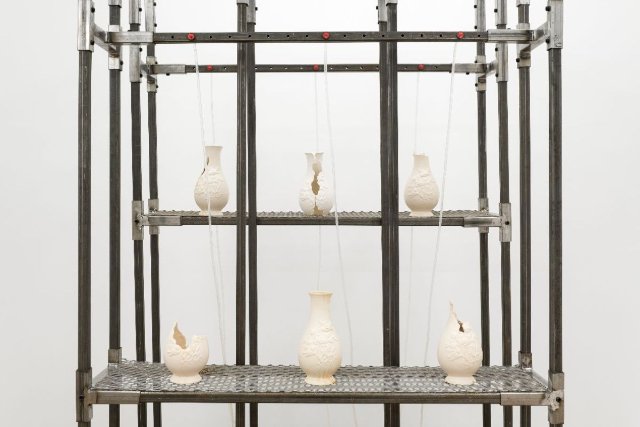installation by Azza El Siddique
At MIT List Visual Arts Center
By: List - May 25, 2022
This summer, the MIT List Visual Arts Center debuts a site-specific installation by Azza El Siddique. The exhibition, which runs from June 30 to September 4, is the artist’s first solo museum presentation and marks the 25th exhibition in the List Projects series, which began in 2013.
El Siddique is known for sculptural environments in welded steel that take up the related themes of entropy, impermanence, and mortality. Reflecting the transitory nature of these subjects, many of El Siddique’s installations are experienced with multiple senses and feature materials that change over time. In past works, the artist has outfitted her austere metal constructions with heat lamps that diffuse scents like sandalwood, and slow drip irrigation systems that gradually erode smaller sculptures in unfired clay. These aromas and materials evoke both Islamic mortuary rituals and the artist’s sensorial recollections of her adolescence in a Sudanese community in Canada. The slow events that unfold in El Siddique’s installations are processes the artist likens to the subjective, unstable, and mutable production of historical narratives and personal recollections.
At the List Center, El Siddique’s newly commissioned work, In the place of annihilation, where all the past was present and returned transformed (2022), uncovers the intertwined, personal, ancient, and colonial narratives of the fragrances used in bukhoor. Ubiquitous in Sudanese and diasporic Sudanese homes, this incense is made from compressed sandalwood chips, a blend of precious aromatic resins including frankincense, amber, and oud, Sandalia (a sandalwood oil perfume), and European scents made for export to North African markets—all bound together with sugar. While bukhoor is commercially available, there are many homemade variations on the complex fragrance, and El Siddique studied traditional recipes to develop the incense that serves as a sculptural medium in this installation.
Small sculptures of the cast bukhoor, incrementally heated, will gradually combust—permeating the gallery with scent, and eventually deteriorating until only an ashy, sticky residue is left. These cast incense objects are placed within the framework of an immersive steel architecture that is based on the floorplan of the birth house of Dedwen. (The temple of Dedwen, a shape and gender-shifting Nubian god closely associated with the natural resources of Nubia, and particularly incense, is located at the Kalabasha Temple grounds, a UNESCO world heritage site in what is now southern Egypt.) The artist’s structure also houses a two-channel video mapping chemical compounds of the various ingredients that comprise bukhoor incense. The video’s 3-D scans of eerily floating mounds of frankincense and other fragrant resins also allude to historical trade networks, as ancient Nubia’s premier export to Pharaonic Egypt were the aromatics used in religious ceremonies that were intricately linked with displays of state power.
El Siddique’s poetic and sensorial evocations of the long and multi-layered histories of ancient sites, precious resins, and traditions that she carries into the present highlight how, in the artist’s words, “lineage and inheritance keep moving through systems” that transform with the passage of time.
List Projects 25: Azza El Siddique is organized by Selby Nimrod, Assistant Curator.

